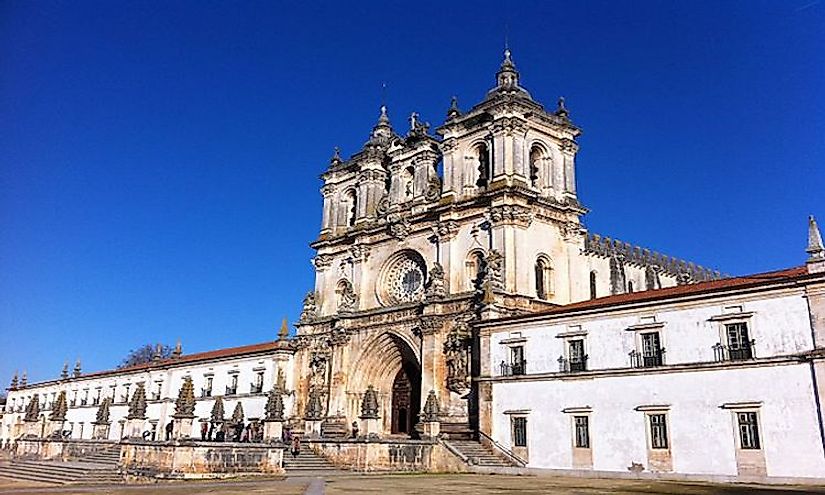UNESCO World Heritage Sites In Portugal

Portugal is a unitary semi-presidential state located in the southwestern parts of Europe. It borders the Atlantic Ocean to the west. The capital of the country is at Lisbon which is also the largest city. Portuguese is the official language while Mirandese is a recognized regional language. The Portuguese are the predominant ethnic group in the country making up 96.3% of the country’s total population. The country has its public cultural facilities. It has fifteen UNESCO word heritage sites making it 17th in the world according to the number of sites.
UNESCO world heritage sites in Portugal
Alcobac Monastery
The Alcobac Monastery a medieval Catholic monastery located in Alcobaca municipality. It was founded in 1153 and later inscribed in 1997as a cultural site. It was a gift from the first Portuguese, Alfonso Henriques, to Bernard of Clairvaux. Afonso Henriques founded the monastery as a strategy to consolidate his authority and colonize the areas recently taken by Reconquista. After the arrival of the Cistercian monks in the Alcoblaca region, they first lived in wooden houses and later move into the stone monastery. The monks were entirely dedicated to religious meditation and creating illuminated manuscripts. They created one of the largest libraries in the country.
Alto Douro Wine Region
The Alto Douro Wine Region is a Portuguese wine area located in the upper parts of river Douro. It is few miles from Porto city and is sheltered from coastal influence by a range of mountains. Grape seeds found in the area are part of the archeological evidence that winemaking in the region dates back to the 3rd century AD. Members of the Cistercian order played a significant role on wine making in the region. This is through their three main monasteries; Salzedas, Sao Joao De Taroyuca, and Sao Pedro Das Aguias. The 17th century saw a massive growth of the region's vineyards. A treaty, the Methuen Treaty, was signed between England and Portugal in 1703 and led to the establishment of a huge number of British port lodges in Porto. The treaty made port wine the primary product of the region and an important aspect of the economy. It is the first wine region globally to have a formal demarcation. The area was inscribed by UNESCO for its long tradition of viticulture and a landscape of outstanding beauty.
Batalha Monastery
The name of the monastery is literary translate to mean the monastery of the battle. It was built as a memorial for the 1385 battle of Aljubarrota and later served as burial church Aviz dynasty royals in the 15th century. It is a huge monastery that took over a century and fifteen architects to complete. An earthquake in 1755 did some damage to the monastery while the Napoleonic troops did more damage by burning it in 1811. King Ferdinand II started a restoration program of the complex in 1840. In 1902, it as declared a national monument and later museum in 1980.
Evora Historic Centre
Evora City is also referred to as the museum city. In the 15th century, it became the residence of the Portuguese kings. This city boasts off a rich history dating back to two millennia. The historical presence of the Roman Empire is evident from the road system and the Dian temple. The town is also home to the first ever Portuguese Gothic monument. Some notable features in the city are; palaces, Mannerist and Baroque convents and Renaissance. The site was inscribed in the UNESCO world heritage list in 1986.
Tourism Draws
Some of the notable attractions in the Alcobac Monastery include; the royal tombs, Royal Pantheon, Chapel of Saint Bernard, Sacristy, Room of the Kings, dormitory, Cloister of Silence, Chapter House, Kitchen and the Refectory. Some attractions to the Batalha Monastery include; the Chapter House, Coyal cloister, Lavabo, Cloister of King Afonso and the unfinished chapels.
UNESCO World Heritage Sites In Portugal
| UNESCO World Heritage Sites In Portugal | Year of Inscription; Type |
| Alcobaça Monastery | 1989; Cultural |
| Alto Douro Wine Region | 2001; Cultural |
| Angra do Heroismo Town Center in the Azores | 1983; Cultural |
| Batalha Monastery | 1983; Cultural |
| Côa Valley and Siega Verde Prehistoric Rock Art Sites | 1998; Cultural |
| Elvas Garrison Border Town and its Fortifications | 2012; Cultural |
| Évora Historic Center | 1986; Cultural |
| Guimarães Historic Center | 2001; Cultural |
| Hieronymites Monastery and Tower of Belém in Lisbon | 1983; Cultural |
| Laurisilva of Madeira | 1999; Natural |
| Oporto Historic Center, Luiz I Bridge, and Monastery of Serra do Pilar | 1996; Cultural |
| Pico Island Vineyard Cultural Landscapes | 2004; Cultural |
| Sintra Cultural Landscape | 1995; Cultural |
| Tomar Convent of Christ | 1983; Cultural |
| University of Coimbra – Alta and Sofia | 2013; Cultural |







